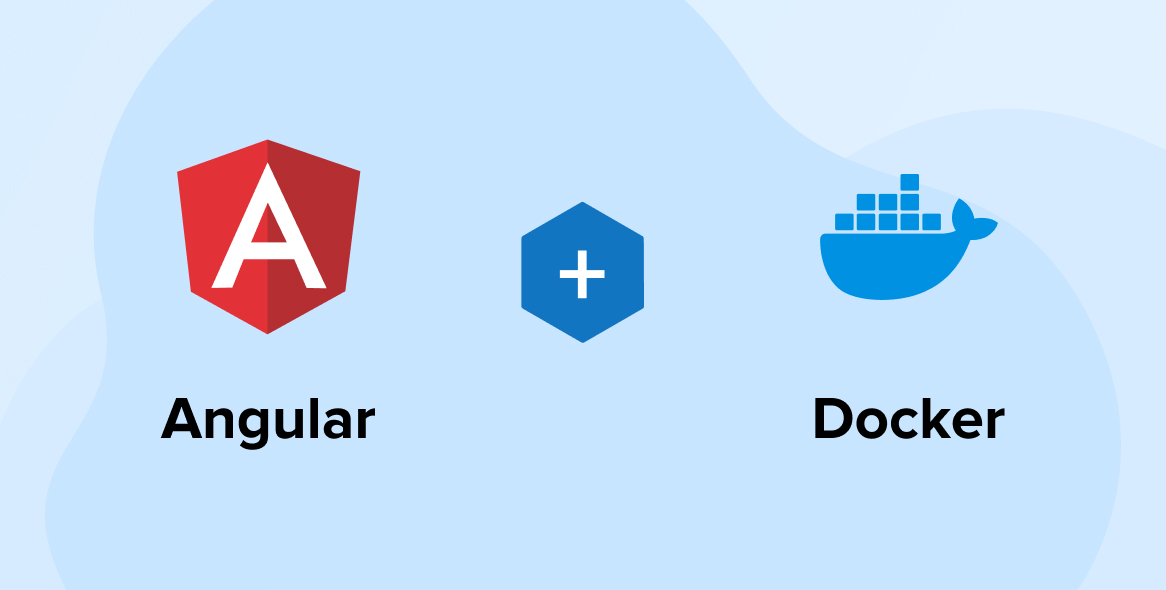
Numerous JavaScript frameworks keep on upgrading their versions to cater to more enhanced capabilities. Angular and React are two strong JavaScript frameworks that are going through equally comparable development and upgrades. Due to some different features and functionalities, many businesses prefer to migrate their app to more sustainable frameworks. Thus, in this post, we will learn how Angular to React Migration works, and what challenges you may face while transitioning.
1. Why Migrate to React from Angular?
You might be wondering why you should switch to the JavaScript library React. Before going ahead with migration, it is advisable to consult your Angular development service provider. They can help determine if migration is necessary for your specific app business needs. Well, moving from Angular to React is a good decision for many reasons. A few top ones are these:
1.1 React’s API is Simple
React’s API simplifies the management of application elements through a select suite of components and the React component lifecycle feature, a cornerstone of its component-based architecture. Class components in React ES6, mirroring those in React JS, utilize properties like state and props, enabling straightforward modifications to the core code. Additionally, integrating statistics into React projects is streamlined with the Fetch and Axios APIs. Defining ES6 classes and creating stateless components within the React JS is also straightforward, enhancing the development process.
1.2 Unidirectional Data Flow
When working with dynamic data like multi-row tables Angular’s two-way data binding can complicit implementation and reduce UI performance.
With React unidirectional data flow, data moves downwards from parent to child components. This phenomenon minimizes errors, simplifies debugging, and enhances efficiency, as the library more effectively manages the state and data passed as props to child components.
4️⃣ Data Flow:
— Er. Kunal Gavhane (@iam_kgkunal) July 5, 2023
In React.js, the flow of data is unidirectional, from parent to child. Props allow you to pass data down the component tree, enabling the sharing of information between components in a predictable manner.
1.3 Vibrant Ecosystem and Community
A wide range of external libraries, tools, and materials have been developed around React, making it an integral part of many others. People here are always thinking of new ways to solve problems, and the community is thriving as a result.
1.4 JSX Syntax Enhance Power of JavaScript
React uses a different approach than Angular, which is primarily dependent on HTML injection with Angular-specific syntax to provide features like two-way data binding and the connection of JavaScript controllers to user interface views. React’s JSX syntax is an extension of JavaScript that uses all the capabilities of JavaScript to define the UI with React components. The syntax of JSX allows for the use of functions, if statements, for loops, and JS expressions.
1.5 Lightweight Components
React defines both functional stateless components and ES6 class components. Stateless components, while useful for their simplicity and absence of state, do not have access to component state or lifecycle methods. For such cases, ES6 class components are preferable. Developers can rely on these to create lightweight, reusable components.
1.6 Performance Boost with Virtual DOM
React’s Virtual DOM enhances performance by optimizing the rendering process. By effectively updating just the required portions of the actual DOM, the Virtual DOM minimizes actions that are resource-heavy. This has the potential to result in improved performance, user experiences, and faster user interfaces.
2. Migrating from Angular to React: Challenges
While migrating from Angular to React has numerous advantages, you should be aware that it also comes with certain risks and difficulties. It is always recommended to hire a React development company if you’re looking for a smooth migration. Because they’ll look at every aspect before and during migration. Let’s take a look at the potential challenges of switching from Angular to React.
2.1 React Keeps Advancing
Learning new things and coming up with solutions to problems are two things developers like doing. Developers strive to stay up-to-date with the latest features and improvements in React, so they can integrate them into their projects. Furthermore, the community gets the benefits of innovative frameworks that boost React developer skills and ensure the library’s sustainability in the long run.
2.2 Not SEO Friendly
Applications developed in React rely on client-side rendering, where the browser loads HTML and JavaScript files from the server and executes them for the user. However, this rendering approach can complicate search engine crawling and indexing. Search engine bots typically fetch the HTML content first and execute JavaScript on subsequent crawls, potentially leading to indexing issues due to incomplete content retrieval.
2.3 Choosing Helper Libraries in React
The core library of React is much smaller than that of Angular, so developers have to choose and install additional libraries to provide features like routing, data fetching, and state management.
The abundance of libraries available makes choosing the right one for a project challenging and requires careful consideration.
3. Angular to React Migration Process
Making the switch from Angular to ReactJS is no small feat. You need to think about a few important things to make sure the migration process goes well. The most important things to remember while moving to ReactJS are:
3.1 Assess Your Current Application
When making the switch from Angular to ReactJS, it’s important to take note of your present project. You need to specify not just the features and functionality of your app, but also its dependencies and the libraries used by third parties. Keep in mind that you’ll have to make some changes or replace any proprietary code to use ReactJS.
Examine your data management, state handling, and Angular app and services thoroughly throughout this review step. Doing so will aid in the detection of problems that can develop throughout the move.
3.2 Set up a New ReactJS Project
Start a new ReactJS project once you’ve gathered insights from your thorough analysis of the current Angular application, which uses Angular components.
Prepare your project directory, run ReactJS and its dependencies, and set up tools like Babel and Webpack. Managing a current Angular component and planning a migration strategy, which can include adding new functionality and a generic bridge component, are both part of this step.
Keep in mind that ReactJS brings new syntax and code standards, particularly around react components, despite certain shared features. Before beginning the conversion, familiarize yourself with ReactJS so that you can easily transfer Angular components & elements to the new React environment.
3.3 Component Migration
You can begin migrating your Angular components to ReactJS once your new ReactJS project has been configured. Swapping out any Angular-specific interfaces or commands with ReactJS syntax and rebuilding the functionality of your existing component in ReactJS is what this requires. Component style and markup might require adjustments to meet ReactJS requirements.
3.4 Restructure Services and Data Handling
The migration process should be expanded to include data management and services. Update data structures and API calls to work with the React component, and use frameworks for state management if needed.
Understand the new paradigm in data management, where props allow data to flow downwards from parent components to child components and callbacks allow actions to flow upwards.
Further Reading on: Angular State Management
3.5 Test and Debug Your React Application
It is critical to test and debug your application extensively after converting Angular components and reworking services. Included in this is making sure your software works properly and is compatible with all major browsers and devices. Additionally, you might have to address any problems or errors that crop up during React application testing.
Keep a careful eye on your application’s performance and note any possible performance concerns during testing. Although ReactJS is renowned for its speed and efficiency, optimizing your code and avoiding needless re-renders will guarantee that your application operates without a hitch.
3.6 Deploy Your Application
The planning of this migration process ends with the launch of your refreshed application. Select a web host for React app deployment, such as Heroku or Amazon Web Services (AWS), then set up your server and database so that they work well with React components.
Make sure your React app is secure and runs fast so that people all around the world can benefit from the new features your React project has to offer.
4. Angular to React Migration Strategy
Many companies face the difficult decision of choosing whether to upgrade their outdated systems or adopt new, cutting-edge technologies.
A couple of popular approaches to this change are the “Rewrite Method” and the “Strangler Method.” There are pros and cons to every method and will be discussed below.
4.1 Rewrite Method
Steps to Execute Rewrite Method
- Review – Start by taking a good, hard look at your old system and learning all you can about its architecture, dependencies, and features.
- Appearance – Make use of current frameworks, best practices, and technologies to plan the new system’s architecture.
- Development – Create a brand-new system from the ground up, improving upon existing features while adding new ones.
- Testing – Make that the new system works as intended and satisfies all criteria by testing it thoroughly.
- Data Migration – Make sure all data remains intact when you transfer it from the old system to the new one.
- Setting up – The old system should be phased out while the new one is gradually put into place.
Advantages of Rewrite Method
- Fresh Start: Eliminating the limitations imposed by outdated code enables the development of a simplified and efficient system.
- Full Modernization: Use state-of-the-art development methodologies, architectures, and technologies.
- Reduced Technical Debt: Get rid of the technical debt that has built up in the old system.
Disadvantages of Rewrite Method
- High-Resource Necessity: The process of rewriting an entire system can be expensive and lengthy.
- Challenges to Business: Business activities could be impacted during the switch from the previous system to the new one.
- Serious Threat: Possibility of new problems being introduced or functionalities being missed during the rebuild.
4.2 Strangler Method
Steps to Execute Strangler Method
- Assessment- Find only the necessary parts of the old system that need updating or replacing.
- Isolation – Get rid of these compounds and replace them with modern technologies.
- Integration – Allow the new and old parts to coexist by integrating them.
- Gradual Replacement – Continue to “strangling” the legacy device with updates as additional additives are added over time.
- Retirement – Once all critical components have been replaced, the complete older computer will be retired.
Advantages of Strangler Method
- Gradual Improvement: Permits a method of gradual updating that causes little interruption to operations.
- Taking Precautions: Minimizes the risk of a full system rebase.
- Saves Money: Without a doubt, you can lower prices by allocating resources as needed for each aspect.
Disadvantages of Strangler Method
- Difficulty level: System coexistence management can prove challenging.
- Protracted Shift: A rewrite could be faster than keeping the old gadget.
- Difficulties with Interoperability: Integrating new and old additives without a hitch could be challenging.
5. Essential Tools for Angular to React Migration
A well-planned mixture of knowledge and the appropriate tools is necessary for migrating Angular projects to React apps. Think about using one of these Angular to React code conversion tools to simplify this complex process:
- gitignore and npmignore Files
- Goal: When it comes to managing packages and versions, these files are vital.
- Benefits of Migration: Makes it easy to switch between React and Angular by integrating their component dependencies.
- karma.conf.js
- Goal: To validate your migrated components effectively, set up the Karma test runner for JavaScript.
- Benefits of Migration: Gives you a rock-solid base to evaluate your React components’ performance and scalability.
- package.json and package-lock.json
- Goal: Make sure that both React and Angular have a well-defined home in the project’s metadata and dependencies.
- Benefits of Migration: Lets you handle dependencies across competitors, so both frameworks can operate in balance within your project.
- README.md
- Goal: Provides developers with the necessary project files to help them gain insight into the migration procedure and how React fits in.
- Benefits of Migration: Helps developers get up and running with React more quickly by providing a central reference point.
- index.tsx and test.tsx
- Goal: The TypeScript entry point files and the test files will let you move your source code from Angular to React.
- Benefits of Migration: Streamlines the process of converting TypeScript files to conform to React syntax and standards.
6. Conclusion
Switching from Angular to ReactJS could be an exciting and stressful experience. The change will go more smoothly and efficiently if you follow the instructions in this blog article and use some best tools suggested.
Before you start testing and debugging your new ReactJS app, be sure to analyze your existing app, create a new project in ReactJS, migrate your elements, rework your database and service management, and run deployment tests.
Making the switch from Angular to ReactJS is possible with the correct frame of mind and strategy, allowing you to take advantage of a more robust and modern web development framework.
FAQ
How to Migrate Code From Angular to React?
Follow these steps to migration:
- Evaluate the potential benefits and drawbacks.
- Create a working model.
- Choose which components of your application will be migrated initially.
- Make the switch from Angular to React.
Can We Merge Angular and React?
Yes, you can use both Angular and React in parallel with one another.
Can We Use Angular in React?
Yes, you can. For that, you will need to utilize a React library to construct a component of your Angular application that is supposed to be developed in React.






Comments
Leave a message...